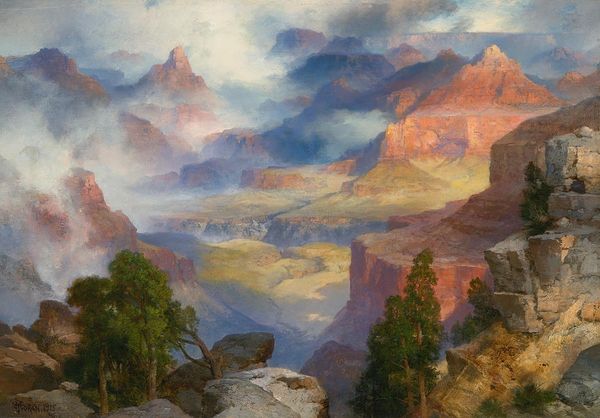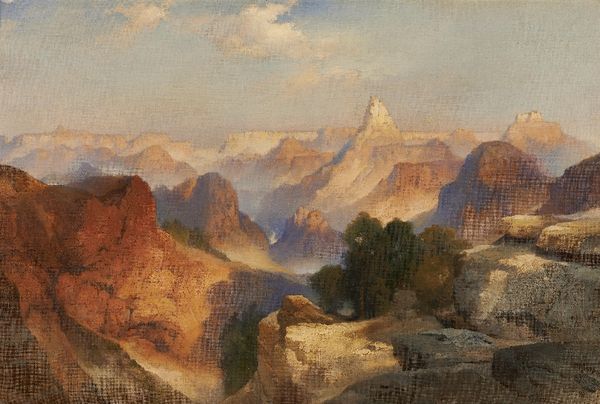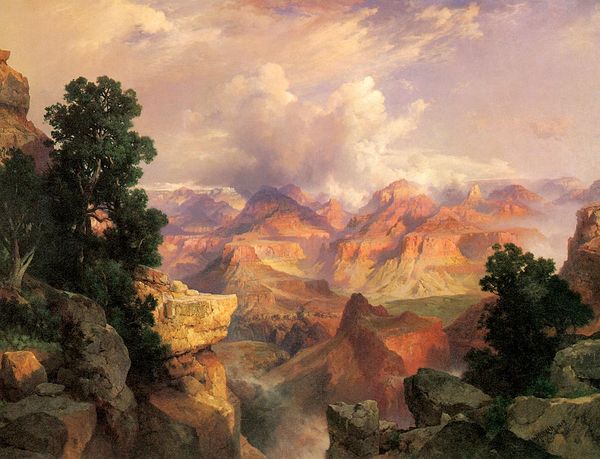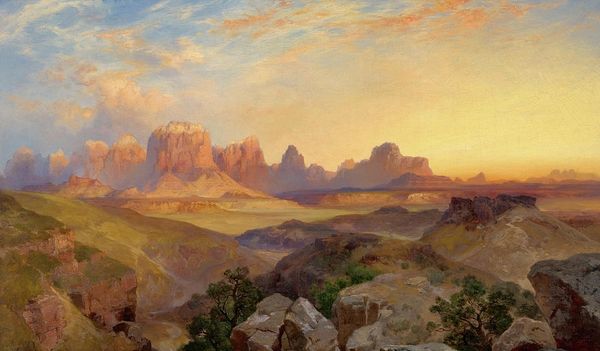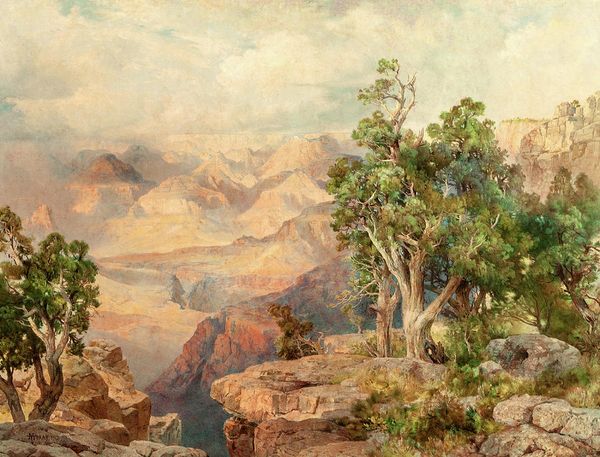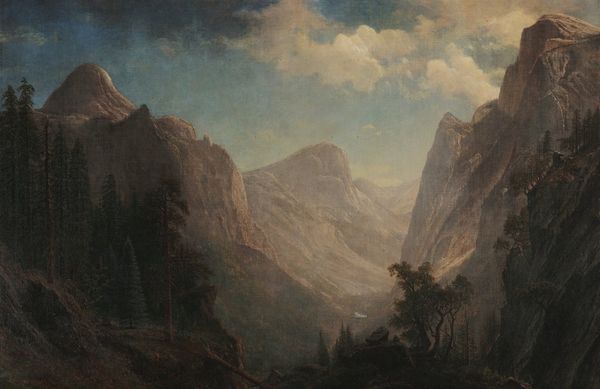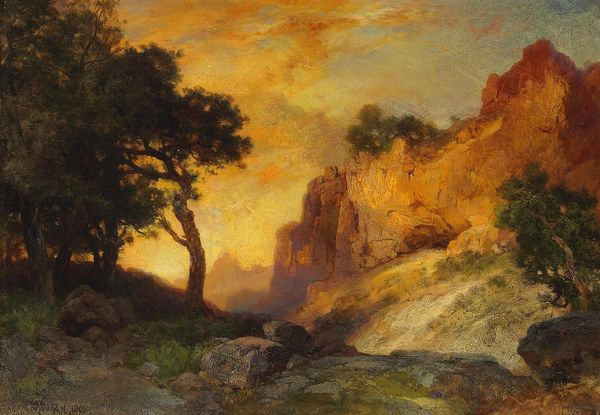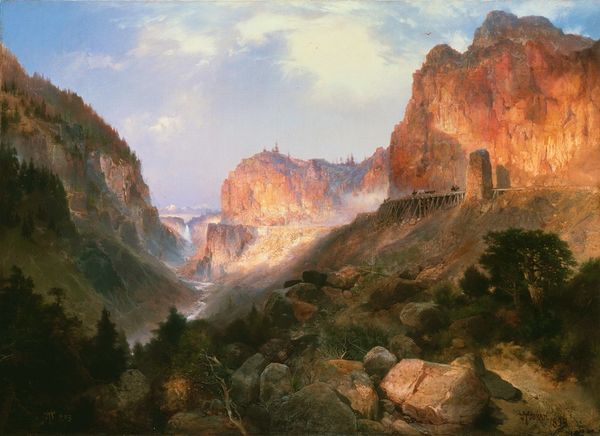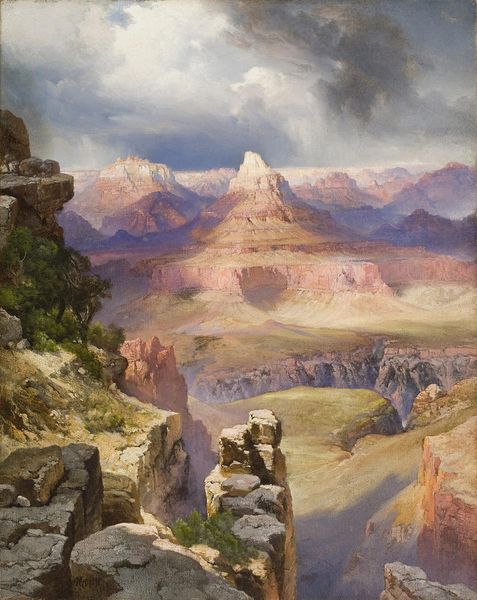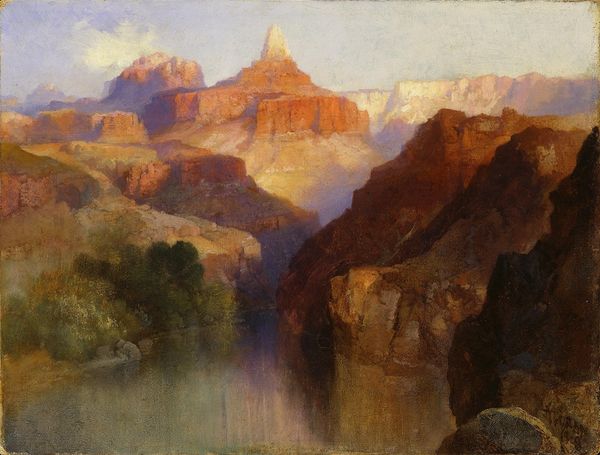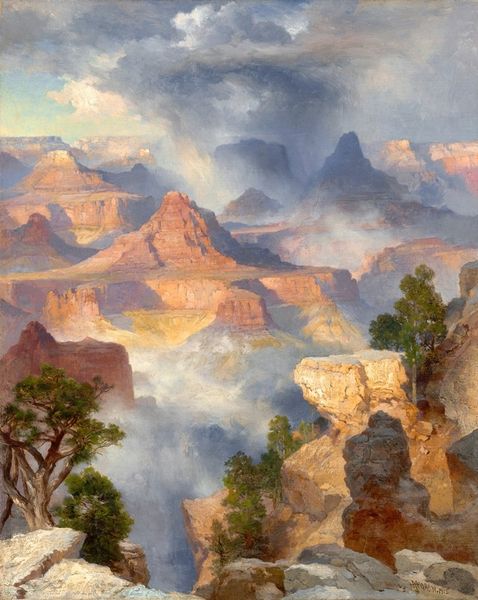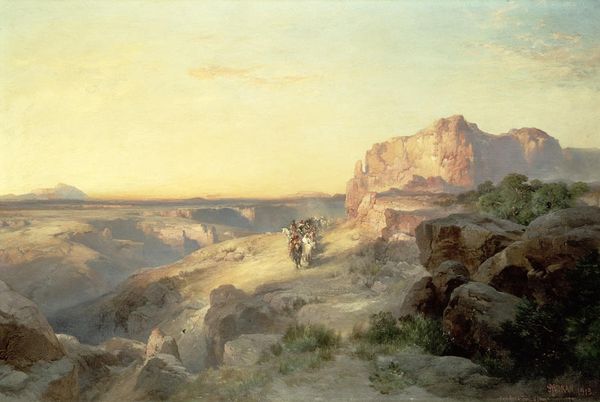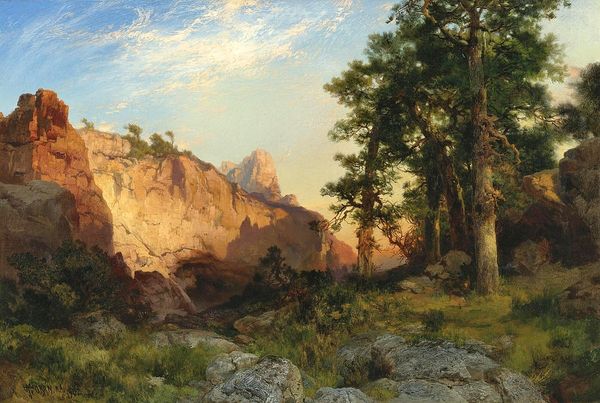
Dimensions: 63.5 x 76.2 cm
Copyright: Public domain
Curator: We’re looking at “Grand Canyon with Rainbow” by Thomas Moran, dating from 1912. The medium here is oil paint. Editor: It's breathtaking, really. A cascade of warm tones against cool shadows… and the subtle presence of the rainbow whispers of hope and transience. Curator: Moran’s depiction here falls within the tradition of the Hudson River School, emphasizing the sublimity of the American landscape. His work certainly shaped how the Grand Canyon was perceived. There was considerable cultural impact tied to Moran's promotion of natural wonder. Editor: I see the rainbow, too, almost like an archetypal symbol of promise and renewal, rendered fleetingly over such ancient geological formations. Consider the enduring weight that rainbows have carried through centuries of art and storytelling. Curator: True, the Grand Canyon wasn't just scenery to Moran; it was a national icon, a visual representation of American identity being institutionalized. But let’s remember, even romantic interpretations of the landscape are loaded with colonial and expansionist meaning. This work invited people west, displacing Indigenous populations, transforming access, and altering resources. Editor: And perhaps Moran was knowingly using these loaded visual codes. The light feels divinely inspired here. Look how he’s almost ritualistically deployed symbolic weight—the rainbow of course, but also how light overcomes shadow—these oppositions represent our struggle and wonder towards something monumental and unknowable. Curator: Moran, supported by the railroads, actively participated in establishing tourism and even advocated for turning Yosemite and the Grand Canyon into national parks. So he clearly sought to define and influence cultural value in that sense. Editor: Right, but I can't help but also respond on a purely intuitive level; that arc of light speaks directly to a hopefulness, it promises, whether rightly or wrongly, something beyond just the physical. It creates that sublime experience of transcendence. Curator: A landscape transformed by cultural representation as much as physical formation, isn't it? And its implications reverberate even now. Editor: Yes, a landmark defined as much by what it meant to us as what we meant to it. The way that it became a potent symbol that both empowers and destroys.
Comments
No comments
Be the first to comment and join the conversation on the ultimate creative platform.
